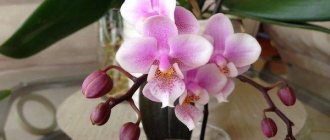When you first look at a living stone flower, you get the impression that it is artificial. The reason for the misconception is the structure of the plant: the flowers seem to grow directly from thick, porous stones. However, those who have come across lithops (Lithops) or have them in their home flower garden know that the apparent stones are quite living petals that require special care. Like most succulents, the plant requires proper watering, good lighting and a cool winter. About this and other features of growing home lithops in the following material.
Briefly about care
- Watering. During the hot period, once every two weeks, and in winter it is not watered. Water should only fall on the soil.
- Illumination. Loves the sun, but should be shaded during the growth period. In winter, additional lamp light is needed.
- Air humidity. Tolerates dry and humid air well. Avoid drafts, but ventilate the room where the flowerpot is located.
- Temperature conditions. Summer and spring: +22–+25С. In winter - not lower than +10 C.
- Bloom. Blooms in autumn at the age of 3–5 years. Flowers can be observed for about two weeks.
- Rest period. It begins after the end of flowering (late autumn) and lasts until the beginning of spring. Requirements: humidity 50%, artificial lighting.
- Transfer. The purchased flower is immediately transplanted into prepared light soil. Adult lithops are transplanted every 2–4 years.
- Soil mixture. Loose, with the addition of sand, small pebbles, broken bricks. A mandatory requirement for soil for growing lithops is neutral acidity. Otherwise, the succulent will not live long.
- Fertilizers. Generally recognized “survivalists” do not need feeding. The exception is for specimens that have been sitting in the same pot for over 5 years. From spring to autumn, once every 4 weeks, fertilize the lithops with fertilizers for cacti (divide the dose from the instructions by 2).
- Reproduction. Lithops do not propagate like most houseplants, but are grown from seeds.
- Diseases. Excess moisture causes root rot, new leaves form before the old ones dry out, swell, and become covered with rusty spots. With insufficient lighting, the patterns on the upper parts of the leaves turn pale and the leaves begin to stretch.
- Harmful insects. Mealybugs, rootbugs, sciarids (fungus gnats), spider mites. Pests usually come from nearby house flowers.
Shedding
Lithops has an amazing property: it renews its leaves, like a snake changes its skin. In the first half of February, the top cover of the succulent begins to shrink , then dries out and bursts.
A pair of young leaves growing perpendicularly catches the eye. How long does it take for Lithops to molt for the first time? The molting process stops at the beginning of spring - March, April. In order for the foliage change to go well, you need to stop watering the plant completely. Next, put it in a cool but bright room for a period of rest.
You should not remove old leaves from molting lithops. New shoots take moisture and nutrients from there. Otherwise, the young leaves will not gain strength and will grow clumsy or dry out completely.
Description of the plant
The natural habitat of Lithops (family Aisaceae, Aisoaceae) is the rocky South African desert or the Southwestern part of the African continent. Especially many species grow in South Africa, Namibia, Botswana, and Chile.
“Living stones” grow well on rocky slopes, sandy, and aluminous areas. Plants quickly adapt to their environment and can even change color. Blending in color with the surrounding landscape, hiding among the stones from the sweltering heat, lithops survive where another flower would not last even a day (in the plant’s homeland, daytime heat of fifty degrees is replaced by extremely cold nights).
Historical fact! The plant was discovered and named by the British botanist naturalist D. W. Burchel, who discovered stone-like leaves at the Cape of Good Hope. Only after the publication of his Geographical Catalog in 1815 did they learn about lithops in Europe.
The name “lithops” itself is derived from two Greek words lithos + opsis, meaning “stone” and “similar”. The literal sound is like a stone. This is where the common name “living stones” comes from.
Looking at the flower, you will immediately understand why the Greeks used these exact words: in appearance, lithops resemble small flat stones. And they grow extremely slowly - another reason to compare succulents to stone.
It is believed that this appearance was formed by environmental conditions. Disguising itself as a common stone background, the plant hid from grazing herbivores. Only during the flowering period, when a bright flower appears, does the succulent become vulnerable.
Diseases and pests
Most often problems occur due to:
Spider mites - attack plants kept on poorly ventilated but well-heated window sills, where wet cleaning of accumulated dust is rarely carried out.- Root bugs , which often attack plants with an extended period of “sleep”, so it is better to carry out pre-prevention by using Dantop, Mospilan, etc.
Lithops get sick mainly due to overwatering, which provokes the development of rot.
Lithops do not get sick and are not affected by pests if they are not flooded and they are placed in an area with a comfortable temperature and sufficient light.
These three conditions are quite enough to count on the rapid flowering of “living stones”.
Popular varieties
In the wild, lithops are represented in more than 40 varieties (and it is quite possible that over time there will be even more of them). Only 10 species names are suitable for cultivation under artificial conditions. Especially often grown in home flower beds:
Leslie
Baby lithops (Lithops lesliei) with the aerial part spread out only 20 millimeters. Leslie leaves come in different colors: pinkish-chocolate, cocoa, ocher-greenish, gray and steel shades. Each individual specimen has a unique star pattern on its leaves. The first flowers appear already in the third autumn after the seeds germinate. The lush yellow/white flower appears for just a few days. The aroma is barely noticeable, very gentle and pleasant.
Lithops Leslie (L. lesliei)
Aucamp
No less in demand than the previous Lithops aucampiae. Leaves of emerald, malachite, brown-rust shades are covered with an ornate pattern of dark lines. In rare cases, specimens are found with a gray or bluish color. Several times a year, large, rich yellow or white and yellow flowers bloom, emitting a barely noticeable aroma. The diameter of the leaves of Lithops aukamp is no more than 3 centimeters. During flowering, the diameter increases due to the flower covering the leaves. The height of the above-ground part is 3–4 cm.
Lithops Aucamp (L. aucampiae)
Marble
Marble Lithops (Lithops marmorata) has zinc-gray, upwardly expanded leaves with a 2-centimeter diameter and decorated with a marble pattern. Hence the name of the variety. During the flowering period, a white chamomile-shaped flower with a diameter of 5 cm covers the base of the plant.
Recommendations from experienced flower growers
With proper care, growing lithops at home is not difficult. Just create the right conditions for the plants and very soon they will thank you with luxurious flowering.
The plant requires rare or moderate watering, using a small child's syringe: during the growing season, watering is carried out twice a month (the first watering is carried out when the old leaves are dry to the skin). From October to December - once a month; in winter, soil moisture is prohibited.
Attention! The water is not hard, settled. Make sure that drops do not fall on the surface of the plant or into the crack.
Most varieties require bright, indirect light (only some grow well in partial shade). Ideal location: south or southeast windows. In winter, the plant is illuminated with lamps: adults at a distance of 10 cm, seedlings - 5–7 cm. In spring, during the period of growth of new leaves, hide the succulent from direct sunlight, reducing the shading time every day.
The plant adapts to any humidity and easily tolerates dry air. Dry, but not stale. Ventilate the room regularly so that the plant is not exposed to a sharp, cold draft.
In summer and spring: +22+25 C. During the wintering period +12+15 C, lithops requires coolness.
Attention! Lowering the temperature to +8 degrees can lead to the death of the flower.
First flowering at 3–5 years. The flowers are chamomile-like in yellow shades of varying intensities, white, crimson, etc. The buds that bloom at noon close by night. Flowering lasts about two weeks, from early August to late October.
Attention! If a three-year-old succulent has not bloomed, reconsider its growing conditions. Most likely, the violation is caused by improper watering, excessive feeding, insufficient lighting, etc.
Reproduction
Lithops reproduce by seeds. The collected seeds must be soaked for six hours in warm water, and then sown on the surface of the soil without drying them. The top of the container with the planted seeds is covered with glass or translucent film. Moisten the soil with a spray bottle every day. When the seeds germinate, they need to be watered as the soil dries. As a rule, shoots appear on 6-10 days.
You can learn more about growing lithops from seeds here.
We recommend watching a video about growing lithops from seeds:
Replanting correctly
A transplant is needed if you have just bought “living stones” or your long-lived Lithops has become cramped in an old pot.
A suitable size pot and soil mixture must be prepared in advance. Please note that the Lithops root system goes deep and should not curl. And this will certainly happen if the container is not deep enough. Therefore, to replant a succulent, choose not a wide pot, but a narrow pot with high walls.
Lithops root
Place drainage from crushed bricks, etc. on the bottom. Place soil on top consisting of: leaf/turf soil and millimeter-sized gravel chips (1:1). If you prefer to use a ready-made cactus mixture, add some gravel chips. Heat the soil mixture in the oven for half an hour. This is necessary for disinfection.
To make it easier for the roots to clear the old soil, water the succulent right before replanting. Where the soil mixture has stuck, carefully “walk” with a wooden toothpick.
Having straightened the root along its entire length (without bending or twisting), immerse it in the pot. Add soil little by little, do not press down. The root collar is above ground level. Place small pebbles on top (up to 5 mm in diameter). This will give the plant additional stability and increase soil permeability when watering.
Attention! Do not water lithops for several days after planting!
Few people know that the plants offered for sale are planted in a nutritious, but practically waterproof, airtight peat mixture. In such an environment, living stones do not live long, so do not delay replanting.
Tip: Plant Lithops with other succulents that don't require frequent watering. Place the plants in the same pot at a distance of 2 cm from each other and make sure that it is not only beautiful, but also convenient.
Transfer
Lithops are replanted as the root system grows . When the roots fill the entire inside of the pot, the plant should be transplanted into a larger pot. A small part of the overgrown roots is removed. If they are too dry, then you need to give the roots a bath with warm water. There must be good drainage at the bottom of the pot.
The top layer of soil is covered with small pebbles. The depth of the pot should be at least 10 cm. This type of succulent has a powerful root system that grows deep, therefore, flat flowerpots are not suitable.
All the details about planting and transplanting lithops can be read here.
We recommend watching a video about transplanting lithops:
Possible problems
It happens that inexperienced gardeners complain about the problem of a succulent. Meanwhile, if you properly care for the plant, problems can be avoided. Let's look at the most common violations and their causes:
- new leaves are smaller than the previous ones - a failure in the process of changing old leaves;
- the leaves are wrinkled - not enough watering during the dormant period, or an attack by spider mites;
- the roots began to rot - the consequences of being in a wet peat soil mixture;
- the leaves have swollen and begun to burst - the succulent is over-watered;
- “rusty” spots on the sheets – improper watering;
- patterns on the leaves turn pale - lack of sun;
- does not bloom - too much fertilizer or improper conditions for keeping lithops during wintering;
- Shoots do not appear when propagated by seeds - the seeds are waterlogged or planted too deeply;
- the seedlings are stretched out - there is not enough light;
- green deposits on the soil - waterlogging, inadequate drainage.
If you do not water your lithops correctly, your plant may be attacked by wet rot. The plant begins to wither before our eyes, the leaves lose their elasticity, become thinner, and emit a sharp, repulsive odor. The rotting cannot be stopped. The only thing you can do is remove the affected areas with a perfectly sharpened knife, buy a new pot, and replace the soil mixture.
Before buying lithops, study the description of the species, look at the photo and choose the most suitable plant. You might be interested in the idea of creating a lithops mix by placing several varieties in one succulent garden. This is not only beautiful, but also convenient, because regardless of the variety, living stones are grown the same way.
Growing Lithops from Seeds
To successfully propagate living rock, plant seeds are most often used. In early spring, after pre-soaking, the seeds are distributed over a moist, calcined substrate, without being covered with soil or buried. Covered with film, the crops are provided with a temperature of 25-30 degrees with mandatory daily ventilation to avoid the appearance of fungal spores.
After about a week, maximum a month, the first shoots appear. When the leaves reach a size of 1 cm, the surface is covered with expanded clay and after the first winter, the strengthened grown lithops are planted in pots.











